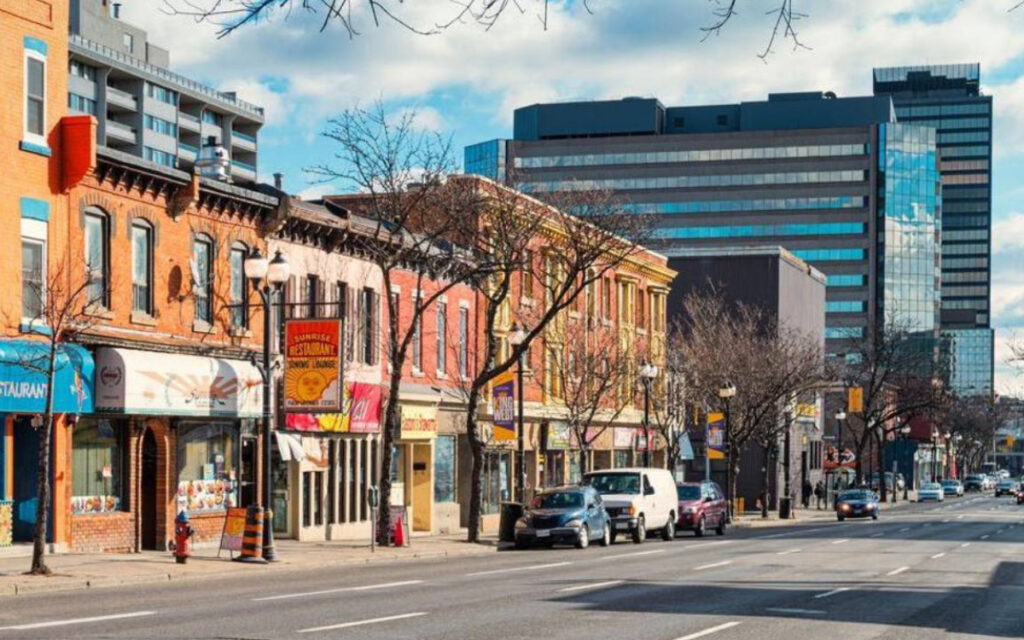
Councillors heard that the project would take until 2028 to complete, with a detailed design phase spanning approximately 24 to 30 months followed by construction activities between 2026 and 2028.
Hamilton’s previous city council voted in May 2022 to convert Main Street to two-way traffic, but a recent report back from staff about the project was not what some councillors expected.
For one, councillors heard that the project would be relatively expensive, costing the city $26 million, although $10 million for road resurfacing was already included within Hamilton’s existing five-year capital plan.
Thus, it appears that the true cost of the two-way conversion of the street would be $16 million.
In addition to the $10 million for road resurfacing, a staff breakdown of the numbers shows that about $8.4 million would be required for “traffic signal reconstruction,” $3.6 million for “corridor improvements,” and $4.5 million for “contingency and miscellaneous” costs.
“Corridor improvements” are described in the staff report as “geometric adjustments, the creation of median islands, the integration of cycling facilities, the implementation of green infrastructure, and the incorporation of decorative elements such as crosswalks and intersections.”
It remains unclear what the $4.5 million in miscellaneous costs would cover.
Councillors also heard that the project would take until 2028 to complete, with a detailed design phase spanning approximately 24 to 30 months followed by construction activities between 2026 and 2028.
Council was hoping that the two-way conversion would take place before the beginning of LRT construction, which is likely to begin at some point in 2025.
In addition, staff recommended a design that sees an asymmetric lane layout, which was questioned by councillors, particularly Councillor John-Paul Danko (Ward 8 – West/Central Mountain).
Staff said that a design with one westbound vehicular lane and two to three eastbound vehicular lanes is ideal.
Staff’s preferred design would see the following layout: Dundurn to Caroline: Three eastbound lanes, one westbound; Caroline to Victoria: Two regular eastbound lanes, one eastbound left turn lane, and one westbound lane; Victoria to Sherman: Two eastbound lanes, one westbound lane, and bi-directional bike lanes; and Sherman to King: Two eastbound lanes, one westbound lane, and an eastbound lane of on-street parking.
Danko said he was “really surprised” to see an asymmetrical configuration proposed by staff as the ideal option.
“When we said we were going to convert Main Street to two-way we meant just like every other road in the city that has a balanced configuration,” said Danko.
“I was really surprised to see especially the part that is west of Caroline that is three lanes one way and one lane the other way which in my mind anyways is essentially continuing the status quo for that section,” he continued.
The City of Hamilton’s Director of Transportation Planning and Parking, Brian Hollingworth, responded to Danko, noting traffic coming off the 403 and the movement of HSR buses are some reasons why staff believe there should be three eastbound lanes in that area.
In the end, city councillors decided to defer discussion on staff recommendations until the February 5, 2024, meeting of the Public Works Committee.
Councillors also directed city staff to look further into council’s preferences for the project.
As such, staff will report back on Feb. 5 with more details regarding the costs of the project, particularly making it more clear which work on Main Street was already planned.
Staff was also directed to look further into the possibility of a symmetrical lane configuration and whether the timeline of the conversion can be accelerated.
Councillors noted that they would prefer two-way traffic conversion “within two years and/or prior to the initiation of LRT corridor construction.”
There were comments from councillors that perhaps the city can do the bare minimum to change the road to two-way traffic and then worry about resurfacing and other work “phased over the following four to six years.”
The initial decision to change the corridor to two-way traffic was made following a number of high-profile collisions along the route.
Statistics also show that intersections along Main Street are among the most collision prone in the entire city.
It is generally agreed that changing the street to two-way traffic and implementing other measures will make the area safer for drivers, cyclists, and pedestrians alike.

Based in Hamilton, he reaches hundreds of thousands of people monthly on Facebook, Instagram, TikTok, and Twitter. He has been published in The Hamilton Spectator, Stoney Creek News, and Bay Observer. He has also been a segment host with Cable 14 Hamilton. In 2017, he received the Chancellor Full Tuition Scholarship from the University of Ottawa (BA, 2022). He has also received the Governor General’s Academic Medal. He formerly worked in a non-partisan role on Parliament Hill in Ottawa.






